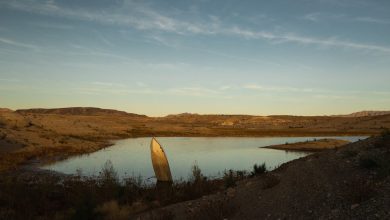Can Lab-Grown Burgers Help Stop Climate Change?

This article is part of the Debatable newsletter. You can sign up here to receive it on Tuesdays and Thursdays.
Humanity’s love of eating animals should worry you, even if humans are the only animals you care about. Meat and dairy production is responsible for 14.5 percent of the planet’s greenhouse gas emissions, with about two-thirds of those coming from cattle. To keep global warming below two degrees Celsius above preindustrial levels, the limit established by the Paris climate accord, the World Resource Institute says much of the wealthy world needs to cut its beef and lamb consumption by 40 percent — and that’s on the low end of such estimates.
Americans are among the top eaters of beef in the world, and persuading them to cut down on it or swap plant-based burgers for their steaks is a challenge.
Enter lab-grown — or, as some prefer, “cultured” or “cultivated” — meat: In the past few years, a small but fast-growing industry has sprung up with a mission to create meat from cell lines that doesn’t just taste like meat but actually is meat. Last year, a restaurant in Singapore even put lab-grown chicken on its menu.
As the sector has bloomed, so too have predictions of its imminent usurpation of meat of the slaughter-requiring variety. But how close are we really to that future, and is it the one we should be aiming for in the first place? Here’s what people are saying.
The urgency of reducing meat consumption
Vexing as the problem beef poses for climate change mitigation already is, it’s going to get worse. That’s because the world is getting richer, and when people get richer, they eat more meat.
-
Since 1961, global meat production has more than quadrupled, to more than 340 million tons from 71 million tons.
-
By 2050, the Food and Agriculture Organization estimates that global demand will reach 455 million tons.
“The 7.8 billion of us on this planet cannot have a steak every night,” Inger Andersen, executive director of the U.N. Environment Program, told The Times in April. “It doesn’t compute.”
And climate change isn’t the only issue at stake in the race to cut down on meat:
-
Pandemics: The increasing demand for animal protein is one of the major risk drivers of pandemic outbreaks, according to the United Nations. Another is the “intensification” of animal agriculture that the growing demand for meat requires: Animals are bred to be genetically similar and crowded together in huge facilities that promote viral transmission and mutation. Since 1940, agricultural intensification measures — dams, irrigation projects and factory farms — have been linked to more than 50 percent of zoonotic infectious diseases that have spread to humans.
-
Animal welfare: You don’t have to believe that eating meat is per se immoral to object to the incalculable suffering factory farming inflicts on billions of animals —





